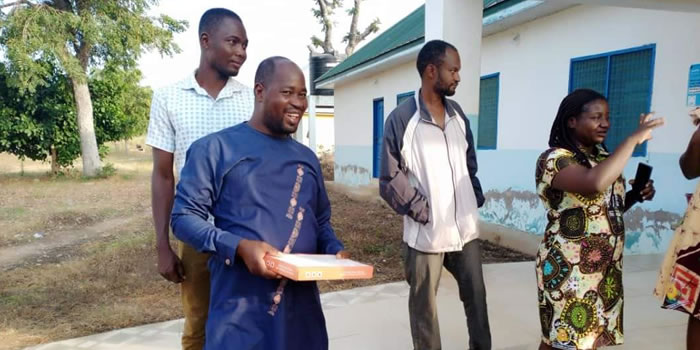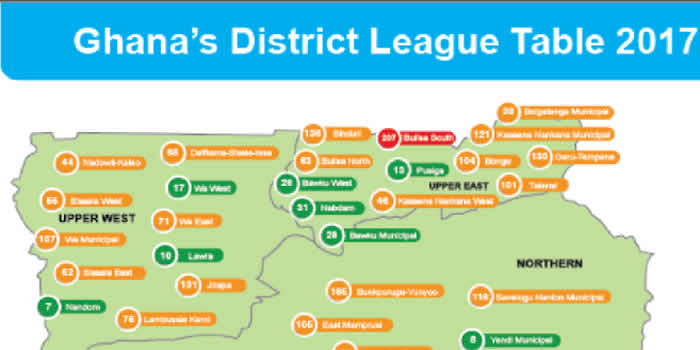

Location and Size
The Sene East District is located in the north-eastern corner of the Brong Ahafo Region of Ghana. It covers a vast land area of 4,392.4sq.km and shares boundaries with East Gonja District to the north, Krachi West to the East, Sene West to the West and Kwahu North to the south. The large land size could be seen as a potential area for agricultural development.
Climate and Vegetation
The district has a tropical climate, with high temperatures averaging 27o C and a double maxima rainfall pattern. Rainfall ranges from an average of 900mm to 1,098.0mm per annum. The vegetation of the district is predominantly Guinea Savanna woodland with light under growth and scattered trees. The major and economic trees are Shea, dawadawa, baobab, mahogany, neem species among others.
The District forms part of the Voltaian sandstone basin, which is the most extensive physiographic region of the country. The landscape of the district is generally flat and low-lying with an average height of 166 meters above sea level. The district is not associated with any significant highlands or hills. However there are isolated rocks in certain parts of the district.
The district lies within the Sene-Obosom river basins and the Volta Lake. The district is not well drained as no major rivers are found except the intermittent tributaries of the Volta Lake and the Sene River. Three major rivers drain the district. These are the Volta, the Pru and Sene Rivers. This has provided opportunities for the emergence of fishing as a major economic activity in the district.
In addition to these major rivers, there are rivulets which dry up during the dry season leaving the district with no surface water for domestic and agricultural purposes. The valleys of these streams/tributaries are however suitable for the development of small-scale irrigation dams and dugouts for dry season gardening, fishing and watering of animals, especially cattle and sheep.
Topology and Drainage
The Volta Lake covers a considerable portion of the district. The formation of the Volta Lake has resulted in the creation of a number of islands in the district. These islands present opportunities for tourism development, which has not yet been explored.
The great potential of the Volta Lake in the development of the district has not been fully harnessed. For instance, it could aid irrigated agricultural development in the district, and treated water supply. However, the lake has provided opportunities for water transport in the district. With the construction of the eastern corridor trunk road which connects the Brong Ahafo Region to the Eastern and Volta regions through the Volta Lake at Kajaji, the district capital, water transport is expected to boost economic activities in the area.
The district falls between the Wet Semi-Equatorial and Tropical Continental Climatic Regions of Ghana and experiences two seasons, rainy and a long dry season. The rainy season starts from April to October giving way to the dry season from November to March.
The rainfall distribution varies from year to year, sometimes with intermittent droughts and floods mostly peaking in August. Generally, the rainfall ranges between 900mm – 1,098.0mm per annum. As it is characteristic of the Brong Ahafo Region, the district has also a bi-modal rainfall regime. April to July is the period for the major rainfall while September to late October, is the minor period. The occurrence of droughts or floods affects crop growth, thus resulting in reduced crop yields every year, as optimal nutrients intake by the crops is impaired.
The District is characterized by high temperatures throughout the year with a mean annual temperature of about 27o C. The Relative Humidity of the area is quite high, averaging over 75 percent. It, however, varies generally between the wet and dry months.
The dry conditions during the dry season promote bushfires, which are sometimes consciously started by farmers and hunters, or unconsciously by improper handling of fire. The dry season is quite pronounced with the main season beginning around mid-November and ending in March.
Date Created : 11/29/2017 3:14:53 AM










 facebook
facebook
 twitter
twitter
 Youtube
Youtube
 +233 593 831 280
+233 593 831 280 0800 430 430
0800 430 430 GPS: GE-231-4383
GPS: GE-231-4383 info@ghanadistricts.com
info@ghanadistricts.com Box GP1044, Accra, Ghana
Box GP1044, Accra, Ghana